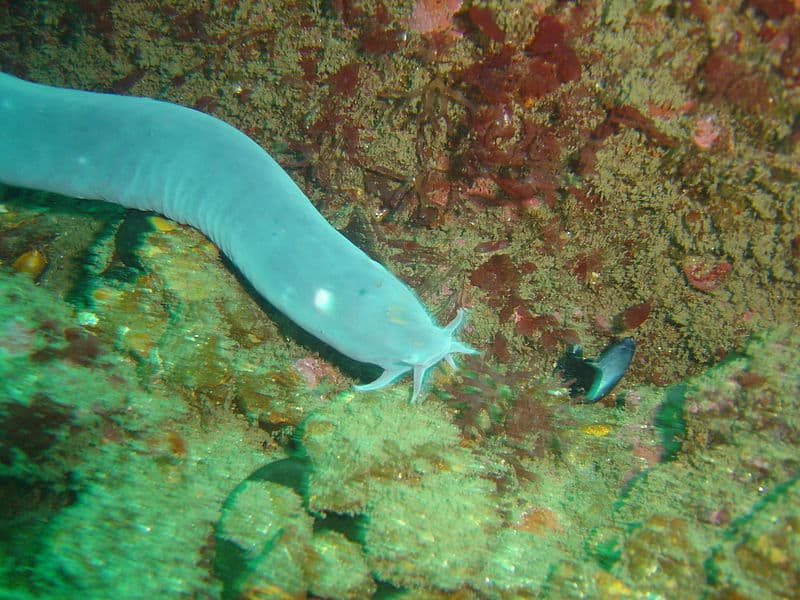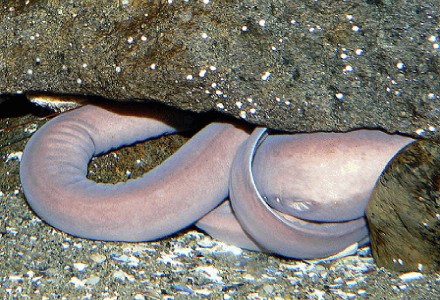
Hagfish Facts
- Firstly, the Hagfish is a unique ocean creature. Though it strongly resembles an eel, it actually represents a primitive species of fish. Yet, many people still commonly refer to it as a slime eel. This occurs due its ability to produce copious quantities of slime at will.
- The Hagfish remains considered a living fossil. That’s because its physiology has remained relatively unchanged for the past 300 million years. This is also the only living creature known to possess a bony skull, but no vertebral column.
- Currently, 76 known varieties of Hagfish exist throughout the world. Its classification also remains a constant source of debate among scientists. Its closest known living relative remains the lamprey eel.
Related Articles
Sea Lamprey Stonefish Spotted Handfish
Hagfish Physical Description
First of all, the various kinds of Hagfish attain different lengths. The largest sometimes reach as much as 4 ft (1.22 m) in length. The smallest ones only reach about 1.6 in (4 cm). Further, between the various species, an average length measures about 19.7 in (0.5 m).
In addition, the Hagfish grow highly elongated in form. Not only that, but individuals also possess a distinctly paddle-shaped tail. The skin also fits loosely over the bodies, providing its uniquely streamlined shape.
The coloring varies between species but includes black, white, bluish gray, and even pink. The eyes are simple, leaving the Hagfish for all intents and purposes blind. Yet, it possesses a keen olfactory sense to compensate.
- Kingdom: Animalia
- Phylum: Chordata
- Class: Myxini
- Order: Myxiniformes
- Family: Myxinidae
Hagfish Distribution, Habitat, and Ecology
The different species of Hagfish live in most tropical and temperate waters. All evolved as deep-dwelling fish and live on the ocean floor or at depths as great as 5,600 ft (1,800 m). There it prefers to hide beneath rocks or the sand.
Further, the animal primarily feeds on the carcasses of dead fish. Yet, it will attack live prey on occasion and has become rather popular for its method of feeding. It attaches itself to the body of its prey, living or dead, and burrow s its way inside.
Once inside, it literally consumes the prey from the inside out. Additionally, if necessary, its slow metabolism allow it to go months without feeding. This provides it with a distinct evolutionary advantage.
Species Sharing Its Range
Blue Shark Black Sea Hare Panda Dolphin
Check out our other articles on 6 Mysterious Natural Phenomenal, Golden Armadillo Lizard, Lady’s Slipper Orchid, Bungle Bungles, Pink Fairy Armadillo, Greater Sage Grouse

